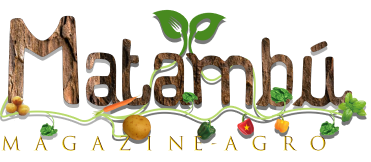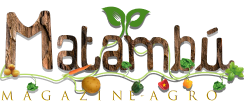[ad_1]
Frans Jordaan and Dr Ben Greyling of the Agricultural Research Council write about the necessary function that efficiency testing performs in rising a commercial herd’s fertility and profitability.
Photo: FW Archive
The common notion inside the beef manufacturing business is that it’s only stud breeders who can profit from efficiency testing. This is just not true! The commercial farmer can enhance his or her personal enterprise with regard to herd administration and cow fertility, in addition to the productiveness and profitability of the herd.
The National Beef Recording and Improvement Scheme (NBRIS), managed by the Animal Production Institute of the Agricultural Research Council (ARC), has all the obligatory instruments to help farmers in changing into commercially productive and making the transition from rising to commercial farmers.
The query has been requested, “When can a farmer be considered a commercial farmer and no longer an emerging farmer?” The reply is, when such a farmer can produce and ship a product, resembling meat, in the type of a weaner calf to a feedlot.
To be worthwhile, a commercial farmer wants to provide the optimum quantity and weight of weaner calves per cow mated at the lowest price doable. Weaner calves ought to be marketed as economically as doable straight after weaning at the optimum weight. Fertility is essential to attaining this effectively, and the development capability of calves from delivery to weaning is not any much less necessary. Post-wean development is of specific significance to the feedlot business.
The foundation of excellent copy administration is superb record-keeping, as this permits the breeder to make knowledgeable choice choices to realize the desired goals. Phases A and B of the NBRIS supply a platform to commercial breeders to measure animals in phases to assist these goals on the highway to monetary success.
Certain administration practices, resembling weighing of animals at delivery and weaning, are already carried out by farmers however, as well as, these weights should be despatched to the nationwide database, which is the Integrated Registration and Genetic Information System, or Intergis.
The capturing on this technique is significant for the information to be processed and changed into helpful data, which is distributed again to breeders in the type of stories on the productiveness and effectivity of the herd. This data helps breeders determine which animals to cull and which to maintain.
Management practices
It is necessary to implement and keep sure administration practices in a structured manner to make sure significant processing of knowledge into data. Most necessary is a set breeding season lasting a most of three months.
The particular interval depends on the regional rainfall season of the 12 months, and should be deliberate to maximise the utilisation of pure grazing at its peak interval, when the dietary wants of the lactating cow peaks, and likewise to keep up the situation and weight of cows and heifers at the begin of the mating season. The lactating cow’s dietary wants peak throughout the six weeks after the delivery of her calf.
Newborn calves
All new child calves should be recorded and recognized with an applicable identification system on-farm, which is usually an ear tag exhibiting the delivery date. This data, along with the birthweight, ought to be captured on Intergis.
It can be necessary to file stillborn calves to precisely calculate traits resembling ‘age at first calving’ and ‘intercalving period’. The latter is the interval in days between two calvings, and is a sign of the stage of copy and fertility of the cow, which is the most necessary trait to be measured in a herd.
Cow weights will be taken at delivery or when the calf is weaned. The latter is generally the best and most sensible time to weigh the cow. The function of a weaner manufacturing system is to realize the optimum weaning weight at the lowest price per breeding animal, which is the cow on this case. It is due to this fact additionally necessary to restrict cow weights in an effort to minimise enter prices.
Selection and administration should think about bettering manufacturing or output. The goal is to wean a calf of no less than 45% of the dam’s physique weight.
When the calves are seven to eight months previous, the breeder can request a selected kind, the ‘wean weigh list ‘, from the ARC. All the farmer’s calves born in the earlier calving
season can even seem on this weigh listing. The weaning weights in addition to the date of weaning should be accomplished on the weigh listing and despatched again to Intergis to be captured.
This allows the system to calculate the commonplace 205-day weight for every calf in the weaning group, in addition to an index worth to point the efficiency of the calf in contrast with the common efficiency of the group.
Animals inside the identical weaning group will range in age by as much as three months from the youngest to the oldest on account of the three-month interval of the breeding season, and this could complicate the comparability of animals primarily based on efficiency inside the group. The older animals at all times have a bonus over their youthful contemporaries, and the bulls over the heifers.
For this purpose, weaning ages are standardised to a 205-day age and are calculated for the whole weaning group. A brand new report, the wean take a look at report, is then generated. This reveals the weaning weight, adjusted 205- day weight and 205-day weight index, which allows the breeder to pretty evaluate animals primarily based on their development efficiency.
Wean manufacturing report
The weaning index for every animal is its efficiency expressed as a share in contrast with the group common, which is at all times 100%. All animals with a weaning index better than 100 are above common, whereas these under 100 are under common.
The wean take a look at report comprises the full weaning group with weaning weights, 205- day weights, and wean indices for comparability functions. The breeder can use this report back to determine calves with the finest development capability inside the group, in addition to heifers for potential alternative of older cows that change into much less environment friendly over time. The weaning weight of the calf is a sign of its genetic capability to develop, in addition to its dam’s milk manufacturing.
After weaning
The common observe adopted by commercial farmers is to market all bull calves after weaning, however solely as soon as the preliminary choice of potential alternative heifers has already been made. This implies that primarily heifers will stay on the farm and proceed from the weaning part to the subsequent phases, that are part B1 (12 months of age) and B2 (18 months of age).
Post-wean manufacturing stories
In addition to the wean take a look at report, post-wean stories are generated for animals of 12 and 18 months of age; these serve primarily as data for the choice of alternative heifers. Phase B is an on-field take a look at for tailored feminine animals, and development efficiency will be evaluated with out the affect and assist of the dam from weaning till the age of 18 months.
Reproduction Report
The copy report, often known as the breeding herd report, comprises a listing of all lively cows and heifers above 24 months of age. It comprises copy data resembling the variety of calves, age at first calving, intercalving interval, and the common weaning index for all calves weaned per cow.
The common weaning index per cow is effective in figuring out the effectivity of the cow, because it takes into consideration her milk manufacturing in addition to her capability to wean an above-average calf in the herd.
If she will not be environment friendly sufficient or doesn’t produce a calf yearly, it may be higher to switch her with a good-quality heifer. Age at first calving is a fertility trait that permits the breeder to determine cows that calve earlier in the calving season, and to permit for extra restoration time for the cow to make sure she is in higher situation for the subsequent mating season.
Benefits of efficiency testing
Performance testing improves administration on the whole, and likewise has many different advantages:
- Breeding seasons guarantee optimum utilisation of pure pastures, particularly when the lactating cow’s nutrient necessities are peaking, with cost-saving on further feed.
- Reproduction data per cow are up to date after every occasion, and the cow will be evaluated frequently to make sure effectivity of the herd.
- Data is saved on a central database and mitigates the threat related to theft or harm to a private laptop.
- Subsidised companies are rendered by the ARC at an reasonably priced charge and there are regional personnel providing assist in all provinces.
- A novel member quantity with herd designation mark is allotted to every producer, with a person title enabling breeders to go browsing to Intergis to generate lists and stories as wanted.
- Support is out there from ARC personnel in all provinces concerning the buy of registered bulls that assist breeding goals, resembling enchancment of development and milk manufacturing.
- ARC technicians who’ve accomplished inspector programs can even help with choice of breeding materials.
Email Dr Ben Greyling at [email protected].
[ad_2]
Source link










